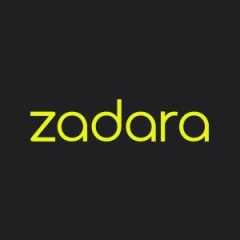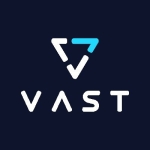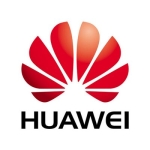
Zadara Valuable Features
KK
KirillKolesnikov
IT Technical Architect at a tech services company with 11-50 employees
Zadara's troubleshooting feature is very valuable for me. After the last update, managing the product became easier. Management is more straightforward and useful. These improvements are crucial for my operations.
View full review »
The most valuable feature is its storage management capability. I find Zadara's user-friendliness from both the customer and engineering perspectives highly appreciated.
View full review »We use both their block storage and also their NAS capabilities.
View full review »Buyer's Guide
Zadara
December 2025
Learn what your peers think about Zadara. Get advice and tips from experienced pros sharing their opinions. Updated: December 2025.
879,455 professionals have used our research since 2012.
SH
Steve Healey
CTO at a tech services company with 11-50 employees
One of the most valuable features is its integration with other cloud solutions. We have a presence within Amazon EC2 and we leverage compute instances in there. Being able to integrate with compute, both locally within Zadara, as well as with other cloud vendors such as Amazon, is very helpful, while also being able to maintain extremely low latency between those connections. We have leveraged 10-Gig direct connections between them to be able to hook up the storage element within Zadara with the cloud platforms such as Amazon EC2. That is one of the primary technical driving factors.
The other large one is the partnership and the managed service offering from Zadara. That means they have a vested interest and are able to understand any issues or problems that we have. They are there to help identify and work through them and come to solutions for us. We have a unique workload, so problems that we may have to identify and work through could be unique to us. Other customers that are just looking to manage a smaller amount of data would not ever identify or have to work through the kinds of things we do. Having a partner that is interested in helping to work through those issues, and make recommendations based on their expertise, is very valuable to us.
Zadara's dedicated cores and memory provide us with a single-tenant experience. We are multi-tenant in that we manage multiple organizations and customers within our environment. We send all of that data to that single-tenant management aspect within Zadara. We have a couple of different virtual, private storage arrays, a couple of them in high-availability. The I/O engine type we're leveraging is the 2400s.
We also have disaster recovery set up on the other side of the U.S. for replication and remote mirroring. Being able to manage that within the platform allows us to add additional storage ourselves, to change the configuration of the VPSA to scale up or scale down, and to make any changes to meet budgetary needs. It truly allows us to manage things from a performance standpoint as well. We can also rely upon Zadara, as a managed-services provider, to manage those requests on our behalf. In the event that we needed to submit a ticket and say, "Hey, can you add additional storage or volumes?" it's very helpful to have them leverage their time and expertise to perform that on our behalf.
It is also very important that Zadara provides drive options such as SSD, NL-SAS, and SSD cache, for our workload in particular. We require our data to not only be accessible, but to be fast. Typically, most stored data that is hotter or more active is pushed onto faster storage, something like flash cache. The flash cache we began with during our first year with Zadara worked pretty well initially. But our workload being a little unique, after that, the volume of data exceeded the kind of logic that can be used in that type of cache. It just looks at what data is most frequently accessed. Usually the "first in" is on that hot flash cache, and our workload was a little bit more random than that, so we weren't getting as much of the benefit from that flash cache.
The fact that Zadara provides us with the ability to actually add a hybrid of both SSDs and SATA allows us to specifically designate what volumes and what data should be on those faster drives, while still taking into account budget constraints. That way, we can manage that hybrid and reduce the performance on some of the drives that are housing data that is really being stored long-term and not accessed. Having that hybrid capability has tremendously helped with the flexibility to manage our needs from a performance standpoint as well as a cost perspective.
As far as I know, they also have solid support for the major cloud vendors out there, in addition to some others that I hadn't heard of. But they certainly support Amazon EC2 and Google and Rackspace, among others. Those integrations are very important. Most organizations have some sort of a cloud presence today, whether they're hosting certain servers or compute instances or some other workload out in the cloud. Being able to integrate with the cloud and obtain data and store data, especially with all these next-generation threats and things like ransomware out there, is important. Having backups and storage locations that you can push data to, offsite, or integrate with, is definitely key.
View full review »MR
Mauro Razzetti
CEO at a tech company with 11-50 employees
The object storage feature is wonderful. With traditional storage, you have a cost per gigabyte that is extremely high or related to the number of disks. With Zadara Storage Cloud, you have a cost per gigabyte that you can cut and tailor to your needs independent from the number or size of the disks.
We have a lot of tenants, so there is a lot of core and memory under pressure in this service. The good thing is that every single tenant is isolated and defined into their computer engine. This means that a customer is not able to create a problem for another customer, even if they get attacked, spoofed, or run malware.
It is absolutely important that the solution provides drive options such as SSD, NL-SAS, and SSD cache because we have a lot of customers. As managed service providers, we have all kinds of solutions. We have a customer that only has five servers, which means very few I/O disks. However, we also have a system with a cluster of databases that requires high IOPS, which means SSD, NVMe, and all the latest, fastest technologies.
View full review »IA
Reviewer429856
Chief Information Officer at a tech services company with 11-50 employees
One of the most useful features is that they provide iSCSI as a service. That was very useful for us because it allows us to simply mount their storage into our servers and just utilize it as if the storage is local. That's number one.
Number two, their reliability and fault tolerance, is really unmatched. We were able to upgrade our storage, add more drives, add volumes, replicate volumes, and change sizes of volumes, all with zero downtime. It's very impressive.
These two features are extremely useful for us. The iSCSI as a service, as well as the fact that the system is highly resilient for fault tolerance.
We typically use iSCSI and to a lesser degree, object storage. We have not been using NFS, so I can't comment on that, but the fact that the solution offers all of those is certainly a big differentiator for people who are looking for those kinds of solutions. It means that they don't have to have multiple vendors or multiple systems to put together to support those different solutions.
For example, if I need to have S3, I don't have to go to Amazon or anybody else because I have it available within Zadara. iSCSI is exceptionally rare to find as a service and the fact that they support it is a major competitive advantage, and the same is true with CIFS and NFS. You would need extra plugins and extra add-ons from other vendors like VMware in order for you to do this, but Zadara does it out of the box, which is nice.
Zadara can be configured for on-premises, colocation, and cloud-based deployments and we use a mixed-mode. We provide our services in a cloud capacity but we're not in the public cloud. We're not in AWS or Azure, for example. We have our own private cloud and Zadara is working beautifully in this hybrid mode. They do have an on-premises solution as well, which we have not yet taken advantage of but we are planning to.
The fact that they can provide us services that are outside of our data center is of utmost importance. If something happens to my data center, I know that I have an off-site remote, either backup or remote system that I can tap into and continue my operations. The fact that they can provide me an on-premises solution, which is really the entire stack in my data center, where I need it to be low latency and high capacity storage, is certainly something that we'll be looking into. It's nice to know that those options are available from the same vendor.
At this point, we only use Zadara for storage, but we are about to use some of the other services. In terms of agility, the platform has been working flawlessly. All their SLAs have been met. We have been adding more storage, we have been upgrading from one engine to another, and all of that was happening without any kind of outage.
I would categorize Zadara as elastic in all directions for the fact that we can add more capacity on the fly. We can add more drives or more cache storage. We can increase the engine if we need to have it faster with more memory, or with more CPU power. The fact that we can do all of that with a click of a button and it happens, it's provisioned relatively quickly, and we pay by the hour rather than paying for it outright, allows us to scale without letting them know. It is easy because they don't have to provision special hardware just for us and it can happen fast. For example, if all of a sudden my business experiences an increase, I can react within the hour. Any change to the billing is reflected immediately.
Using this solution has increased performance in our environment because we can offload storage capacity elsewhere, which we know is infinite in size. This alleviates a lot of the headaches, it's been consistent, and it has worked pretty well. It would be difficult to estimate our performance increase because we don't measure it.
Our data center footprint has been reduced using Zadara. We have fewer storage systems today in our data center which means less power consumption, less environmental impact, less heat, and they take up a smaller physical footprint on the racks. I cannot say exactly how much, but it's definitely at least half a rack.
In terms of saving resources and redeploying people to more strategic projects, I can say that it allows us to support more storage with the same number of people. But, I cannot say that the next time I would have bought storage, I would have had to add another person. I really cannot make that kind of a distinction. The only exception I can say is that they are helping us in our West Coast data center because over there, I do not have any staff. The fact that Zadara is helping me with storage, certainly I can say that there would have been a staff member managing the on-premises storage locally. Instead, Zadara is taking care of that, leaving me with requirements for one less person.
View full review »The two most important things about this solution for us begin with the flexibility of it. It's very easy to expand and compared to other storage systems that we've used, it's a lot more expandable and a lot more flexible in how it's deployed.
The other big thing for us is there's no large capital outlay to buy it. You just pay for the amount of the system that you're using, which is quite important for our business, because that means that we can align our usage with what our customer needs are. This is unlike other storage vendors that we've used. We're not wasting any capacity because we have to buy it in fixed components, in fixed sizes. We can just turn on as much as we need for what we're doing at the time. Essentially, the pay-as-you-go approach means that we are not overpaying or pre-paying for capacity that we are not using.
Zadara absolutely provides us with predictable costs and it's quite a straightforward and simple pricing model. It is very easy for us to predict what the costs are going to be at the end of each month.
View full review »EO
Reviewer75940
CTO at a tech services company with 51-200 employees
The most valuable feature is the different tiers of storage, as it allows us to do some nice bespoke things. Depending on what the customer wants to do, we can provide those three different tiers of storage. This is good because we can be competitive with the pricing so that we're not overselling the high-end storage every time.
A nice feature is the immutable object storage, which can be used in conjunction with Veeam. This was something that they brought out more than a year ago and is quite nice, in particular for our customers who are using our Backup as a Service. This is a USP that we have at the moment.
The ability to take almost instant snapshots is very attractive for us because we are able to expand. Currently, we have one cluster in our data center and we're going to build out a second multi-zone environment in another data center. The snapshots are attractive because we've got very high-speed, dark fiber between those two locations. It means that we can do almost real-time replication between Zadara centers, which will allow us to create some really nice solutions for our customers, particularly for disaster recovery.
It is important that Zadara supports multiple protocols, although, for some of our customers, it's completely over their heads. From the cloud engineers' perspective, it is very important because they are able to architect the solutions in the way that they wish. I wouldn't necessarily say that it is a key USP when we go to customers, however.
It is an advantage that this product integrates with all of the public cloud providers and private clouds, although it isn't the highest thing on our priority list.
View full review »The most valuable feature is the flexibility in terms of deployment options. For example, we typically use Block and Object storage types, but we've also used File storage in the past as well. It also gives you the ability to turn on different features, easily.
There's a simple cost model for everything. It's not like some more traditional storage vendors where we need to go and buy more hardware or pay for three years worth of software licensing, et cetera. We pay for what we use for the month we use it.
View full review »KK
KirillKolesnikov
IT Technical Architect at a tech services company with 11-50 employees
The most valuable feature of Zadara is its ease of use and safety. Overall the solution is a complete package, it has all the features needed.
View full review »Zadara is all-flash so it has a very high IOPS. The speed of the box and what you call the IOPS, the IO operations per second, works very well. The processing is much faster with this product.
Technical support has been great.
The scalability is very good.
View full review »The most valuable features of Zadara are its visibility and simplicity to use.
View full review »Buyer's Guide
Zadara
December 2025
Learn what your peers think about Zadara. Get advice and tips from experienced pros sharing their opinions. Updated: December 2025.
879,455 professionals have used our research since 2012.
















